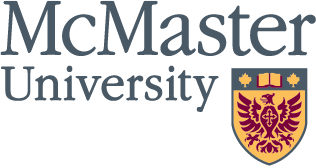Science undergrad spends four months doing fieldwork on ‘bird poop island’ off Alaskan coast
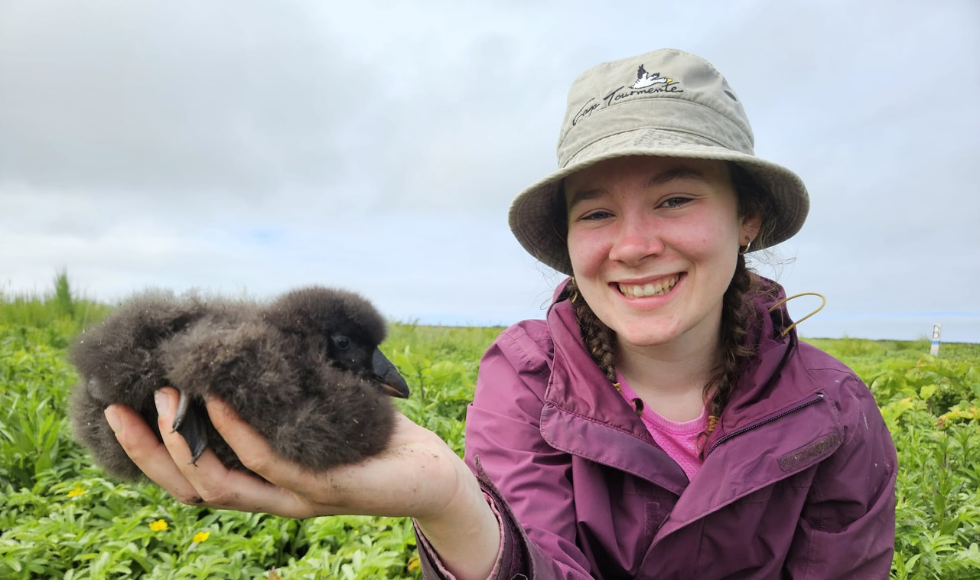
Abby Eaton holds a baby puffin on Middleton Island, which is home to thousands of seabirds.
Abby Eaton knew what was waiting for her on Middleton Island.
The science student was the second undergrad to pitch a tent and do a four-month research stint with assistant professor Emily Choy on the uninhabited island 130 kilometres off the coast of Alaska.
Flynn O’Dacre was the first and told Eaton all about her time on the island the previous year: Expect cool days, cold nights and perpetual sunlight when it wasn’t overcast or raining. Be prepared to work long days. At most, there’d be 20 researchers on the 2,200-acre island that had once been home to an early warning radar station. But don’t bank on any solitude thanks to the thousands of shrieking seabirds that would drown out any attempts to talk on cellphones with family and friends.
There was just one hard and fast rule for Eaton to follow – never head over to the abandoned radar station without covering up head to toe. Birds were going to splatter Eaton in poop and vomit all day every day and this was an island without washing machines or even running water.
O’Dacre then guaranteed that being on Middleton Island would be a life-changing, one-of-a-kind experience.
“I couldn’t wait to go,” says Eaton who’s from a family of outdoor enthusiasts. “I’m an adventurer at heart.”
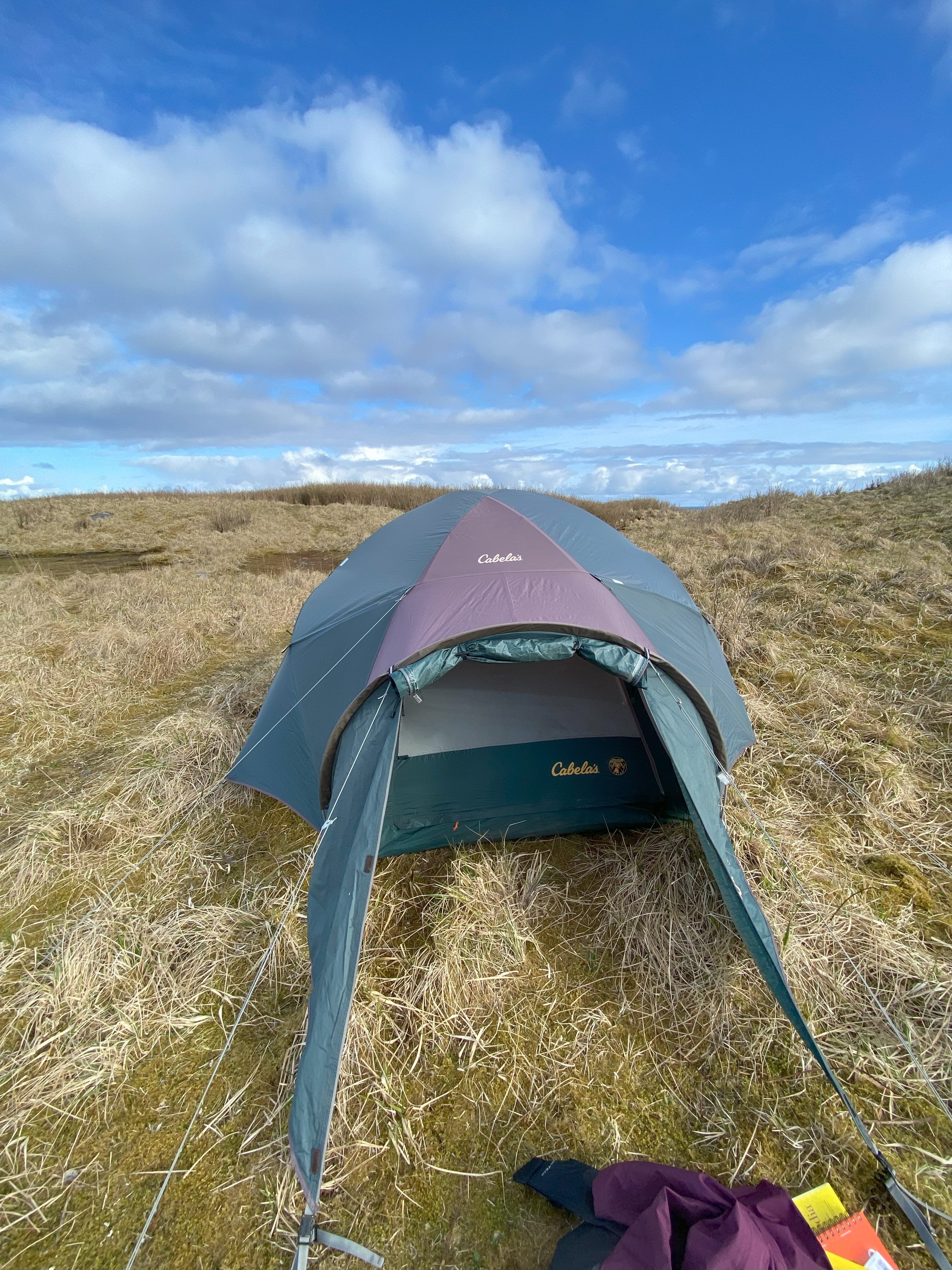
Middleton Island delivered as promised. “It’s the best thing I’ve ever done,” says Easton. She’s heading back in a few weeks and doing it all over again for a two-month stay. Like other seabird researchers, Eaton’s caught an acute case of island fever.
O’Dacre, who was now a master’s student in Choy’s research group, also returned last year for a couple of months and mentored Eaton. “Flynn showed me how to do everything. I never felt out of my depth.” When work wrapped up on O’Dacre’s nesting project and Choy’s research studies, Eaton interned with the Institute for Seabird Research and Conservation.
Eaton and the island’s researchers played endless rounds of board games. There were dance parties on the island’s only road, with lots of Scottish jigs. There were pickup volleyball and soccer games to remind Eaton of Mac where she played nine different intramural sports. They made nets out of whatever they salvaged on the island and found washed up on shore. “There were a surprising number of knock-off Crocs and metal water bottles.” And then there was the unforgettable first time Eaton saw the Northern Lights.
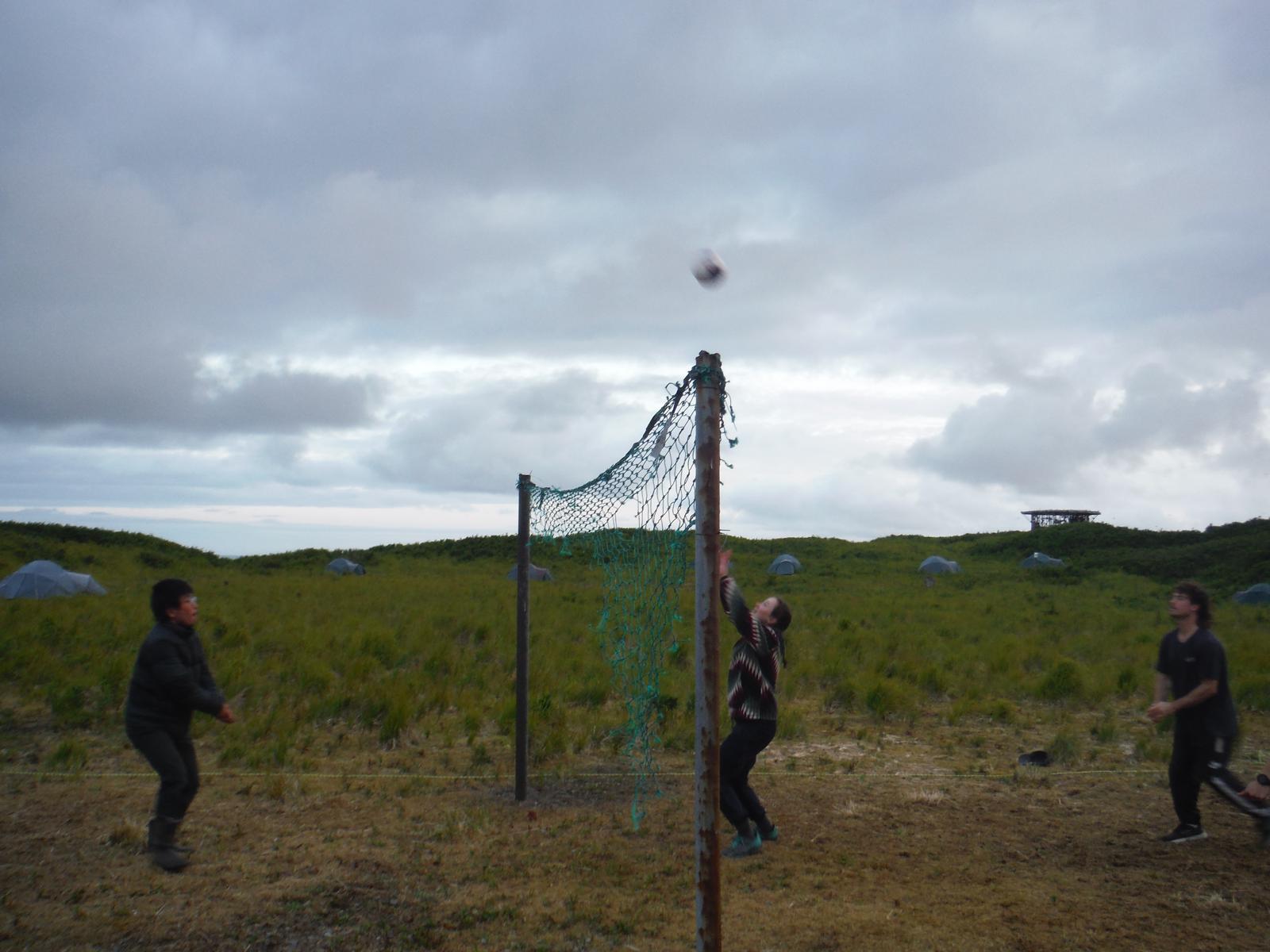
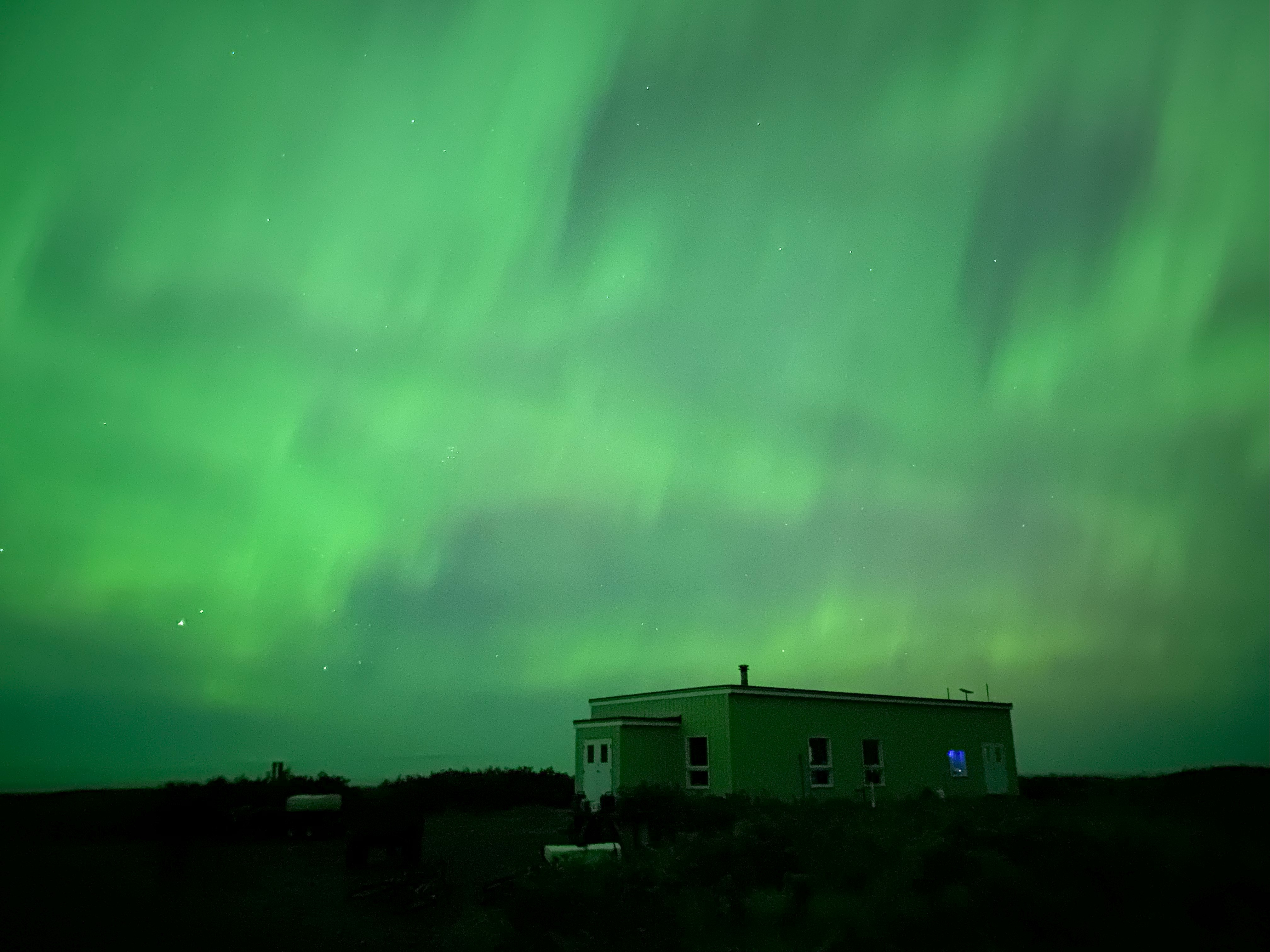
The hardest thing about Middleton Island was leaving it. Eaton stayed at an Airbnb rental in Anchorage before flying home to Ottawa – she kept all the doors and windows open to catch a breeze and keep fresh air flowing the house. She went to Walmart the next day, which may have been too much civilization too soon — it had been four months since she’d seen that much asphalt and the store’s full shelves and racks set off sensory overload. “From May to August, I’d worn the same clothes and all of my possessions fit inside a single bag.”
And there were no flocks of screeching seabirds spinning over the big box store – the silence was deafening.
“Although I didn’t miss the poop and vomit.”
Eaton admits she wasn’t much of a bird person before going to Middleton Island. “I’m definitely one now.” Back at Mac, Eaton took up birding and invited her roommates to take up the hobby. “They’re not yet into birding as I am but they’re happy to tag along for hikes and runs through Cootes Paradise.”
With her Bachelor of Science degree in Neuroscience winding down, Eaton emailed Choy asking if, like O’Dacre, she could stay on as a grad student in her research group. “Dr. Choy emailed back and said let’s talk on Zoom.” Eaton didn’t know what to expect but she didn’t have to wait long to find out. “Right off the top, Dr. Choy said she’d love to have me join her group.”
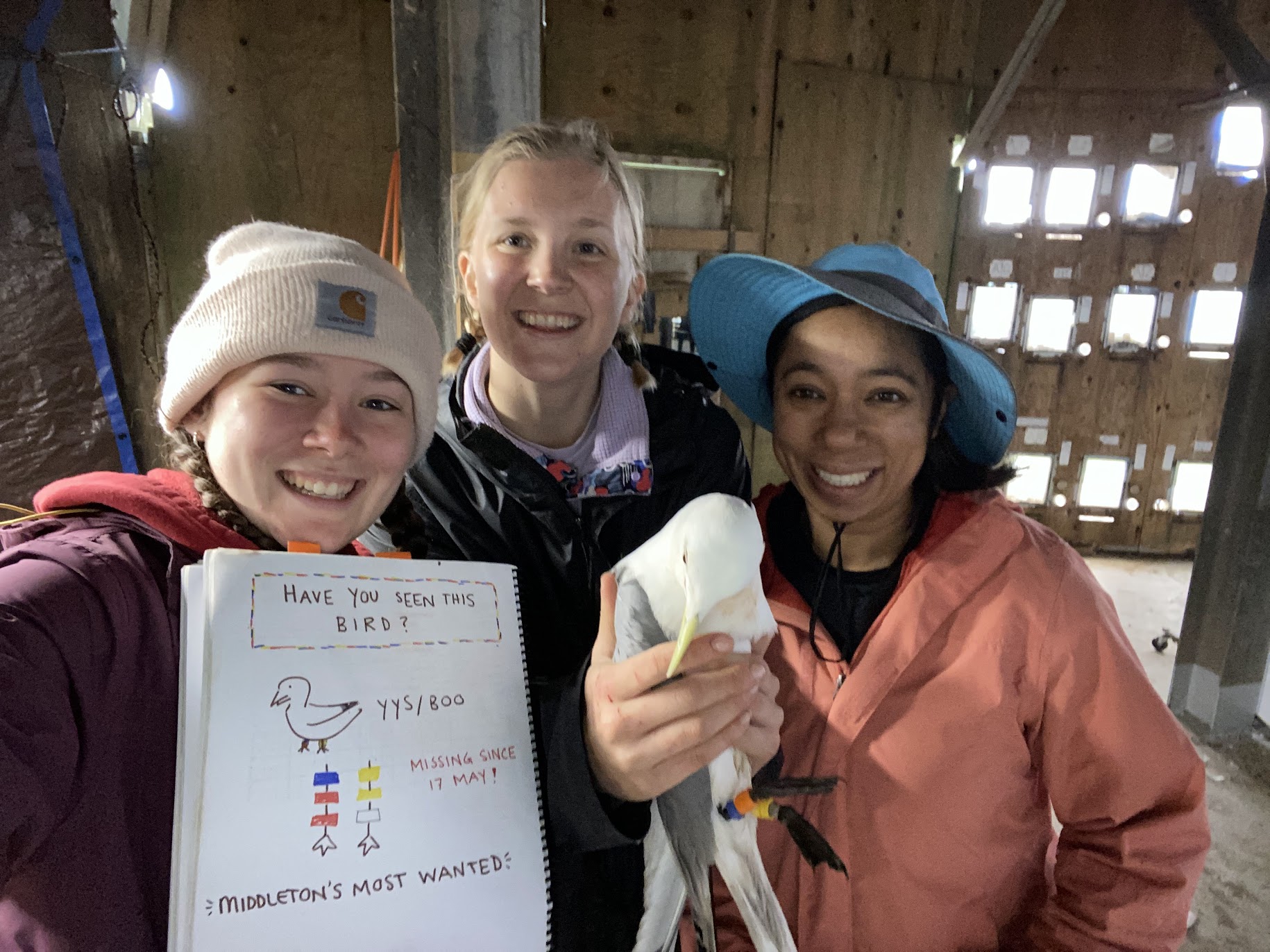
Along with supporting Choy’s research, Eaton will spend the next two years studying stress levels in the rhinoceros auklet. It’s a seabird, a close relative of the puffins and Eaton’s favourite avian. “They’re good at flying but sometimes crash into bushes while landing. They’re nocturnal, live in underground burrows and have a funny call. When they scurry away to their burrows, they remind me of dinosaurs.”
O’Dacre had promised that doing fieldwork with Choy on Middleton Island would be life-changing. Eaton’s now set her sights on becoming a wildlife biologist living on Canada’s East Coast studying Maritime seabirds and supporting conservation efforts. “That’s the dream.”
But first, she’s “counting the days” until a return visit to Middleton Island.
The birds are waiting.
